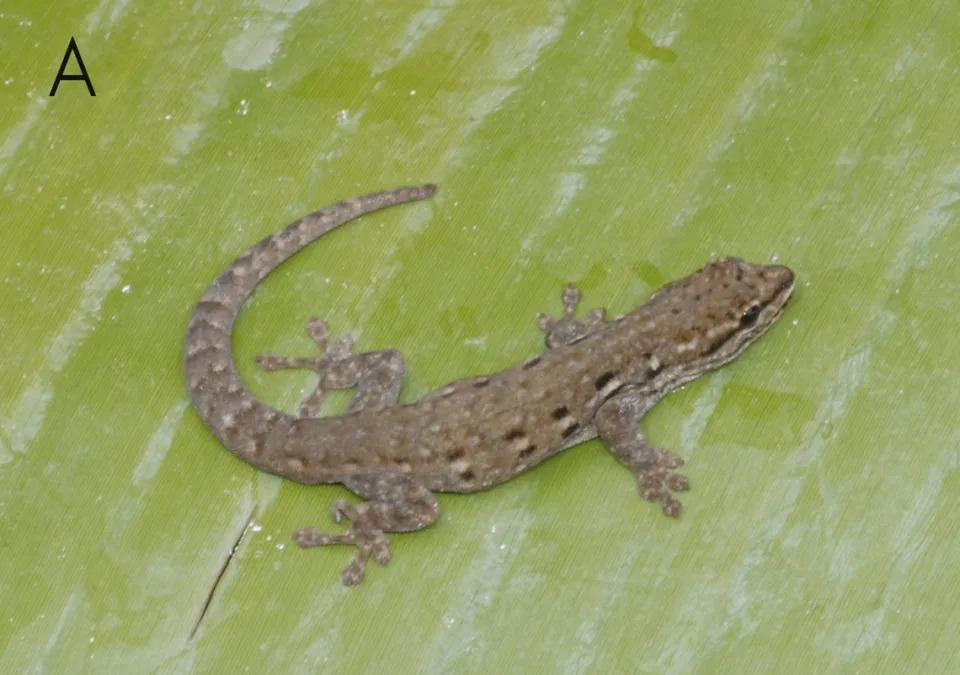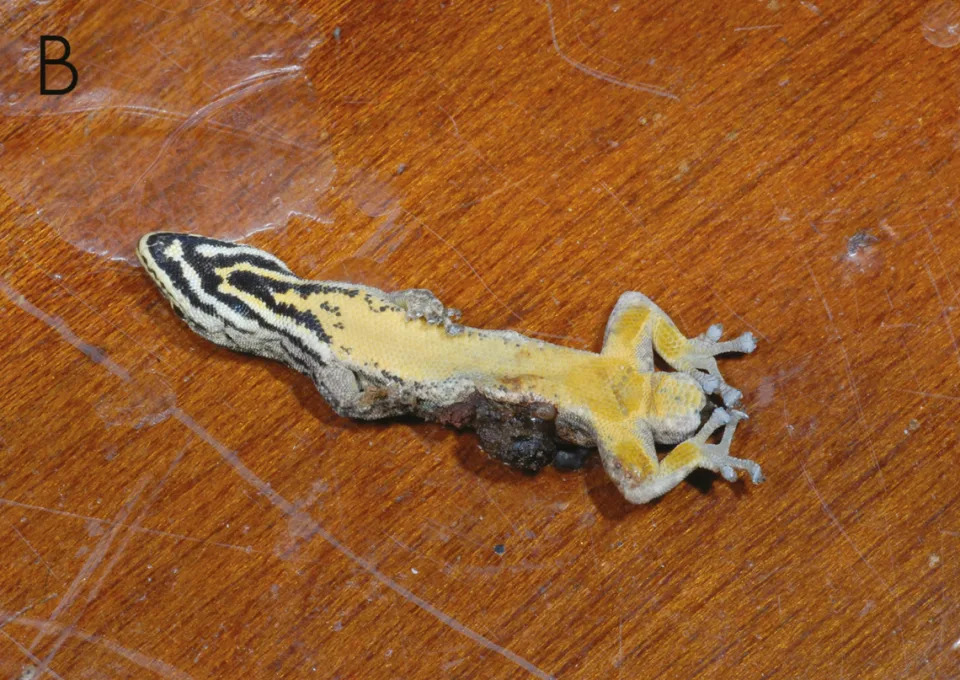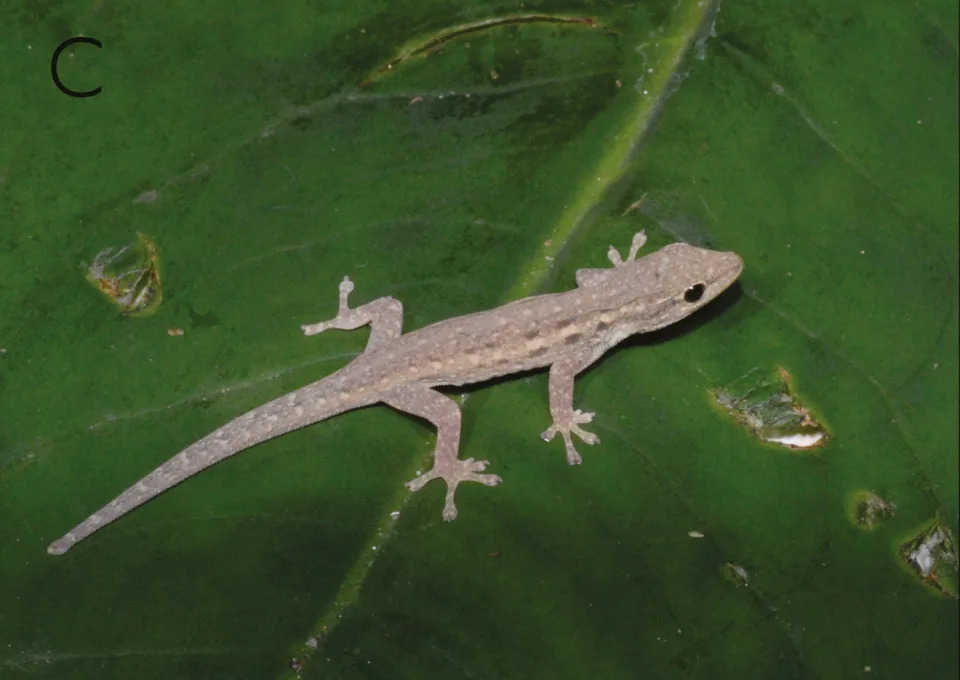‘Dwarf’-like forest creature found inside hotel in Burundi turns out to be new species
Aspen Pflughoeft
Wed, September 27, 2023
Inside an urban hotel in Burundi, a “dwarf”-like forest creature went about its day. The scaly animal had a yellow underside and a patterned throat. It caught the attention of passing scientists — and turned out to be a new species.
After capturing the hotel’s reptilian intruder, researchers ventured into the central African country’s nearby mountain forests, according to a study published Sept. 23 in the Zoological Journal of the Linnean Society.
Once again, researchers found several small lizards with patterned throats, the study said. They captured 12 of these lizards between 2008 and 2011. Taking a closer look, researchers realized they’d discovered a new species: Lygodactylus kibera, or the forest dwarf gecko.
The forest dwarf gecko is considered “large,” reaching about 3.1 inches in size, the study said. Its body is “slender” and “relatively robust.” On the underside of its throat, the gecko has “three black ∩-shaped chevrons,” researchers said.
Photos show the forest dwarf gecko. Its body is tannish with a smattering of dark brown, light brown and cream spots. Below its patterned throat, the gecko’s belly and groin area are yellow, a photo shows.

Researchers said they named the new species “kibera” after the Kinubi word for “forest,” the gecko’s “main habitat.” Kinubi is a “Sudanese Arabic-based creole language spoken in some regions of Burundi, Kenya, and Uganda,” the study said.
Forest dwarf geckos are considered tree-dwellers and are most active during the day, researchers said. The geckos were found in mountain forests but also human-occupied areas such as banana fields and a hotel.

The new species has been found in three spots in Burundi’s Albertine Rift and one spot in the Democratic Republic of the Congo, the study said. The neighboring locations are within about 110 miles from each other.
Burundi borders the Democratic Republic of the Congo to the west, Rwanda to the north and Tanzania to the east and south.

The “cryptic” new species was mainly identified by its throat pattern, size and other “subtle” physical features, the study said. DNA analysis found the new species had between about 6% and about 15% genetic divergence from other dwarf geckos.
The research team included Javier Lobón-Rovira, Aaron Bauer, Pedro Vaz Pinto, Jean-Francois Trape, Werner Conradie, Chifundera Kusamba, Timóteo Júlio, Garin Cael, Edward Stanley, Daniel Hughes, Mathias Behangana, Franck Masudi, Olivier Pauwels and Eli Greenbaum.
Researchers also discovered four more new species of dwarf geckos: a gecko with a “leopard-like” pattern, a “cryptic” woodland gecko, a gecko from a “unique” habitat and a “large” forest-dwelling gecko.
No comments:
Post a Comment